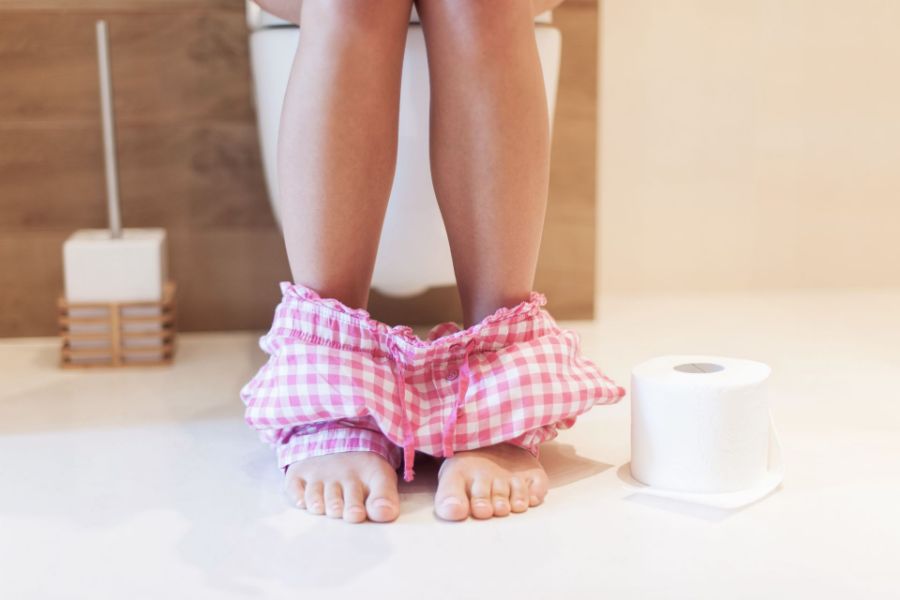
If you've never encountered a composting toilet before, you might be wondering - how do you actually use one? How different is the experience from that of a standard flushing toilet? How do you keep them clean, what goes in them, what doesn't, how much compost do they hold, and how do they empty?
How Different is the Experience From Using a Flushing Toilet?
For the most part, using a composting toilet is very similar to using a flushing one. The pedestals look just like a regular toilet, bar the flush button. You do your business as normal, and wipe up with toilet paper (yes, TP won't harm the compost). Composting toilets handle both number ones and number twos (and even the occasional vom). Once you're done, this is where the experience is a little bit different from what you might be used to - instead of hitting the flush button, simply add a handful of bulking agent to the chamber, and you're done!
Do They Flush?
Composting toilets don't have a flush button because they are waterless (apart from a few micro-flush models). So, instead of flushing your waste away, all you need to do is add a small amount of bulking agent (carbon-based material such as wood shavings/hemp hurd/coco peat/peat moss) to the top of the pile after a number two. This covers up the waste, and helps create the perfect composting environment through the addition of carbon, which absorbs liquids and aerates the pile.
Can You Use Toilet Paper?
Yes, definitely! It is absolutely fine to use normal toilet paper - it will compost along with the rest of the pile. Wet wipes, however, are a no-no. Not only will they not break down, but the chemicals inside them will harm your compost by killing off the good bacteria within.
What Goes Into a Composting Toilet?
The only things that should go into your composting toilet are your poos and pees, some form of bulking agent (carbon based material such as wood shavings, hemp hurd, peat moss or coco peat), composting microbes (in New Zealand this is the WCTNZ® | Microbiota MicrobeBURST™ Composting Additive), and toilet paper. That's it! In terms of cleaners, only use enzyme based cleaners on your composting toilet (we recomment Nature Flush | Enzymes - Concentrate 1 Litre (Enzymatic)). Enzyme cleaners don't only help keep your toilet clean, but actually facilitate the composting process, too! Harsh chemicals, on the other hand, will harm your compost and kill off good bacteria within.
What Shouldn't Go Into a Composting Toilet
You shouldn't put any foreign materials into your compost. Anything that won't biodegrade is a no-no - this includes things like nappies, wet wipes, plastic pad liners, etc. We don't recommend the addition of vegetable peels, either, as these can attract flies. Also, never clean your toilet with harsh chemicals or soaps as these will harm your compost - use enzyme solutions instead (such as Nature Flush | Enzymes - Concentrate 1 Litre (Enzymatic)). Speaking of chemicals... harsh medications (e.g. chemotherapy) can offset your compost. This can be remedied with addition of freeze-dried microbes and hydration with enzymes.
How Do You Clean Them?
Like any toilet, a composting toilet needs regular cleaning. Use enzyme solutions instead of chemical cleaners, and wipe off with paper towels. You can also use a bit of water during cleaning, it won't hurt your compost. For more detailed instructions on cleaning a composting toilet and its various parts, read How to Clean a Composting Toilet.
How Much Compost Do They Hold?
This depends on a few factors - the number of people the toilet is serving, how often it is being used, and, of course, the type of system you have and the size of its composting chamber. Some models require emptying every couple of weeks, while others take six months to fill up. All our toilets give you a guide on how much compost they hold and how often the chambers need to be emptied/swapped out. Each toilet also indicates how many people it is designed to service, and we have models that range from single person usage, right up to commercial units designed to handle heavy use.
How Do They Empty?
Once your composting chamber/tray fills up, it will need to be emptied/swapped out and matured, before being buried sub-strata. Some self-contained systems have compost-collecting trays, while others have chambers and some require lining with compostable rubbish bags. Once your chamber/tray is full, pull it out and throw the contents into a Secondary Treatment System for maturation. If you've got a split-system with rotational chambers, simply swap out the full chamber for an empty one, and let the full one sit and mature. If you've got a split-system with a continuous composting chamber, simply shovel your already matured compost into a wheelbarrow and bury it into your designated land application area. For more info on humanure check out How to Handle Humanure Safely and What to do with Humanure.
Need help choosing a system? Call WCTNZ® on 0800 022 027 for free advice on system specification and setup. Advanced design consultancy services are also available.
WCTNZ® | Waterless Composting Toilets NZ Limited | Copyright 2022 ©















